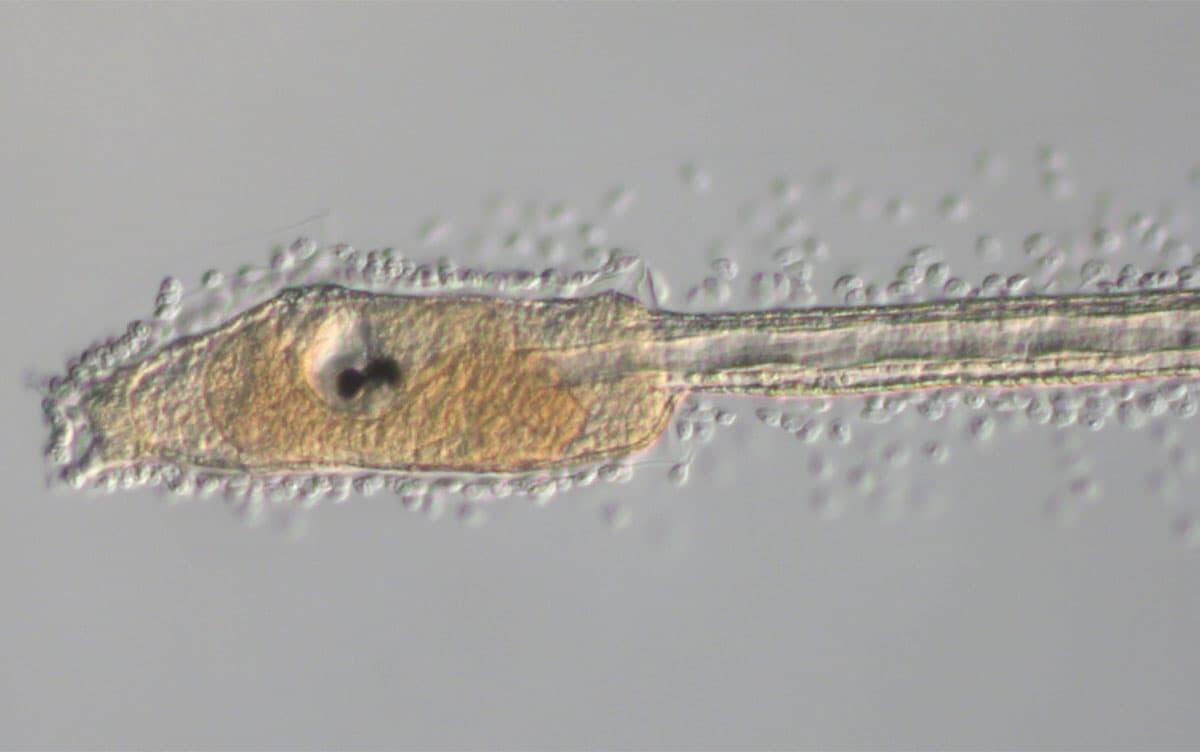Research News
Uncovering How Ascidians Measure Time to Adulthood
 Courtesy of Y.Sasakura
Courtesy of Y.Sasakura
The ascidian Ciona (a genus of sea squirts) begins metamorphosis several tens of minutes after its larvae attach to rocks or other surfaces, transforming from larvae into adults. Researchers at University of Tsukuba have discovered that Ciona measures the time between attachment and the onset of metamorphosis by accumulating a substance called cyclic adenosine monophosphate (cAMP), which is responsible for signal transduction within cells.
Tsukuba, Japan—The ascidian Ciona, a genus of sea squirts, undergoes metamorphosis from active, tadpole-like larvae to sessile adults. Metamorphosis begins when Ciona larvae attach themselves to rocks or other surfaces, typically several tens of minutes after attachment. This delay is believed to ensure that the attachment is secure. However, the mechanism by which Ciona larvae measure the time required for this process was previously unknown.
Researchers have now revealed that Ciona metamorphosis is initiated by the accumulation of cyclic adenosine monophosphate (cAMP). This chemical plays a key role in intracellular signal transduction, and the interval between attachment and the onset of metamorphosis corresponds to the time needed for a sufficient amount of cAMP to accumulate. Interestingly, cAMP does not accumulate immediately after attachment; rather, it follows a complex pattern in which its levels first decrease and then increase. These dynamics are thought to contribute to ensuring that metamorphosis does not begin immediately after attachment but is instead reliably timed.
Although the ability of organisms to measure time is crucial for the proper regulation of life processes, many such mechanisms remain poorly understood. This research is expected to offer insights into time-measurement mechanisms in other organisms, aid in the development of technologies to improve aquaculture by manipulating the timing of developmental events, and help prevent marine biofouling by controlling the timing of metamorphosis in fouling organisms.
###
This study was supported by grants from the Japan Society for the Promotion of Science to K.H. (21H00440, 23H04717, 24K02038), T.H. (19H03204, 21K19249, 21H05239), and Y.S. (19H03262). Y.S. was further supported by a Takeda Bioscience Research Grant. T.H. was supported by the Collaborative Research in Computational Neuroscience program (CRCNS2021). N.M.T was supported by JST SPRING (JPMJSP2123).
Original Paper
- Title of original paper:
- Stimulatory and inhibitory G-protein signaling relays drive cAMP accumulation for timely metamorphosis in the chordate Ciona
- Journal:
- eLife
- DOI:
- 10.7554/eLife.99825
Correspondence
Professor SASAKURA Yasunori
Institute of Life and Environmental Sciences, University of Tsukuba
Associate Professor HOTTA Kohji
Department of Biosciences and Informatics, Faculty of Science and Technology, Keio University
Related Link
Institute of Life and Environmental Sciences






